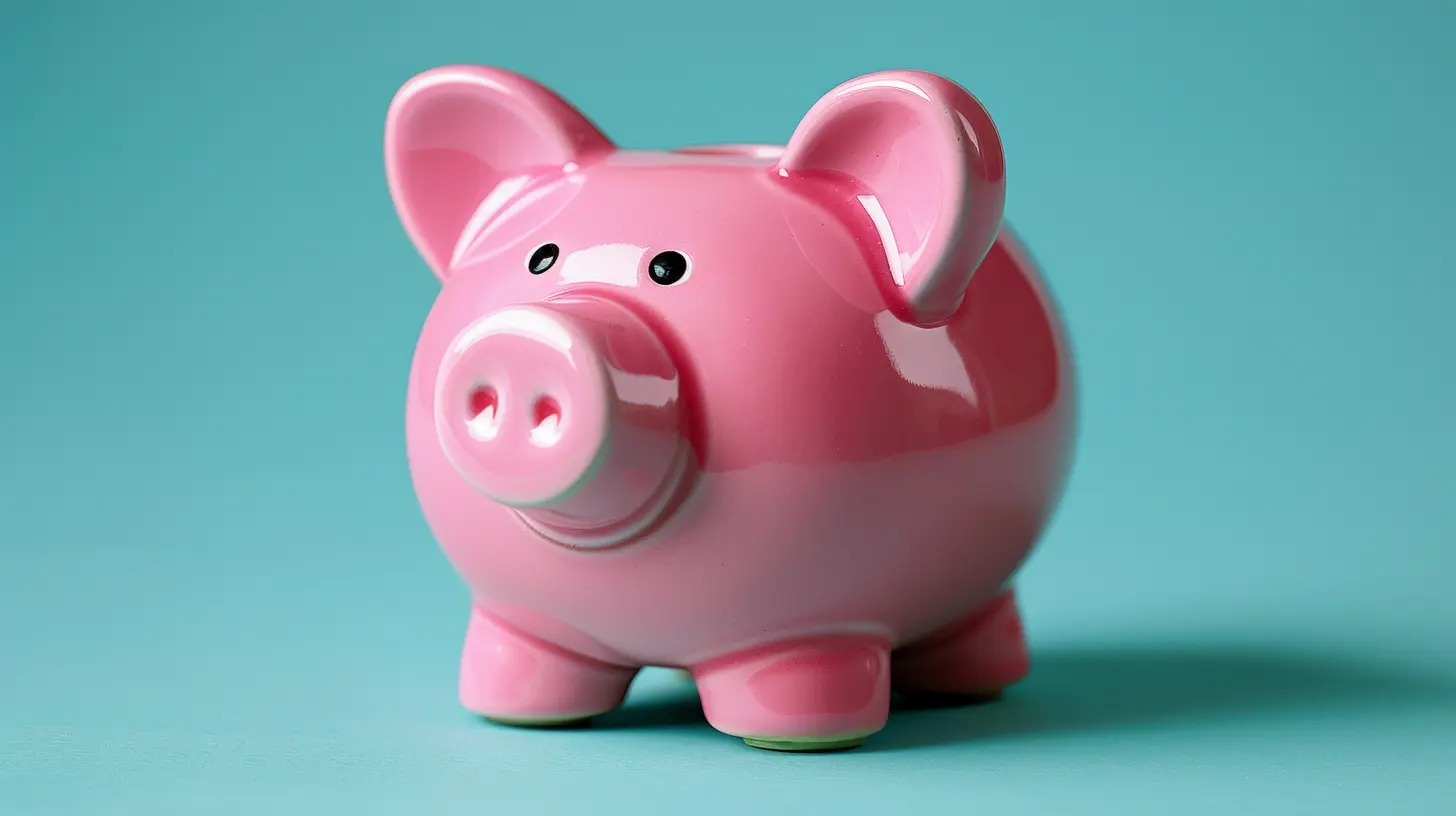Boosting Your Investment Returns with Compound Interest Strategies
24 June 2025
Let’s be honest—when most people hear “compound interest,” their eyes glaze over like they’re reading an old math textbook. But here’s the thing: compound interest isn't just a fancy term your high school math teacher threw around for fun. It’s the secret sauce behind growing real wealth. We're talking about the kind of growth that turns pocket change into a retirement fund, and a small investment today into a life-changing amount years down the road.
So, if you're serious about making your money work smarter—not harder—keep reading. We’re diving deep into how to boost your investment returns using compound interest strategies that are simple to understand, easy to implement, and incredibly effective.

What Is Compound Interest, Really?
Let’s start with the basics. Compound interest is the interest you earn not only on your initial investment (your principal) but also on the interest that investment is earning over time. In other words, your money is making money—and then that money is making even more money.Imagine planting a tree. Not only does it grow taller each year, but it also drops seeds that sprout into more trees. Suddenly, you’ve got a forest. That’s compound interest in action.
The Magical Formula Behind Compound Interest
Here's the standard formula:A = P(1 + r/n)^(nt)
Where:
- A = the amount of money accumulated after n years, including interest.
- P = the principal (initial investment)
- r = annual interest rate (in decimal)
- n = number of times the interest is compounded per year
- t = time in years
Now, don’t let that math scare you. The key takeaway is this: the more frequently your interest compounds, and the longer you leave it alone, the more money you’ll make.

Why Compound Interest Is a Big Deal
So, why does compound interest matter so much to investors? Because it does the heavy lifting for you. While everyone else is chasing the latest stock tip or market trend, smart investors are quietly letting time and compound interest do their thing.Let’s put it into perspective:
- If you invest $10,000 at an annual interest rate of 7%, compounded yearly, in 30 years, you'll have about $76,000.
- Without compound interest, just relying on simple interest, you'd only have $31,000.
Big difference, right? That’s the beauty of compounding.
Strategies to Boost Your Investment Returns with Compound Interest
Now that you’re on board with how powerful compound interest is, let’s kick it up a notch. You don’t just want compound interest working for you—you want to maximize it.Here are some killer strategies to help you get the most from your investments.
1. Start Early, Even If It’s Small
You've probably heard this a thousand times, but here's why it's repeated so often—it works. The earlier you start investing, the more time your money has to grow.Let’s say you invest $200 a month starting at age 25. By the time you’re 65, assuming a 7% return, you’ll have over $525,000.
Now, if you wait until you’re 35 to start? You’ll have just over $244,000. That’s a $281,000 difference—all because of those 10 extra years.
🕰️ The takeaway? Time beats timing.
2. Reinvest All Your Returns
Think of your returns (dividends, interest, capital gains) like a snowball. Every time you roll it in the snow (reinvest your returns), it gets bigger—and faster.Reinvesting creates a cycle where your returns generate more returns, which then generate even more returns. It’s compound interest on steroids.
Don’t cash out your dividends for a quick win. Reinvest them and let them do their magic. Most brokerages even offer automatic dividend reinvestment plans (DRIPs) to make this effortless.
3. Invest Consistently with Dollar-Cost Averaging
Life’s unpredictable, and so is the stock market. Rather than trying to time the market (which hardly anyone does well), use dollar-cost averaging.Here’s how it works:
You invest a fixed amount regularly—say, $300 every month. When prices are high, you buy fewer shares; when prices drop, you get more bang for your buck. Over time, this smooths out the highs and lows and keeps your investment train moving.
It’s like planting seeds every month. Some might fall on rocky ground (bad market months), others on fertile soil (good months). But eventually, you get a thriving garden.
4. Increase Contributions When You Can
Got a raise? Maybe a tax refund? Resist the urge to upgrade your Netflix subscription to Premium Plus Ultra (or whatever it's called now). Instead, increase your investment contributions.Even small bumps—$50 or $100 more per month—can have a massive impact over time thanks to compounding.
It’s like feeding the fire. The more fuel you add, the bigger and hotter it gets.
5. Diversify Your Investments Wisely
Diversification spreads your investments across different assets (stocks, bonds, ETFs, real estate, etc.). This doesn't just reduce risk—it also boosts your chances of steady returns, which is crucial for compounding.You don’t want all your eggs in one basket. Because if that basket drops (hello market crash), your compounding journey can take a serious hit.
Instead, spread your eggs across different baskets that grow at different speeds but support steady compounding growth.
6. Avoid Fees That Eat Your Returns
Compounding works best when your money isn’t getting nibbled away by fees and commissions.Be wary of:
- High mutual fund expense ratios
- Unnecessary account maintenance fees
- Over-trading that racks up brokerage fees
Use low-cost index funds or ETFs. They often outperform actively managed funds over time due to lower fees. Vanguard, Schwab, and Fidelity all offer great low-fee options.
Think of fees like termites chewing away at your wooden house. Left unchecked, they’ll quietly destroy your growth.
7. Don’t Interrupt the Compound Cycle
Life throws curveballs—we get it. Emergencies happen, and sometimes you need to dip into investments. But the longer you can leave your investments untouched, the more compound interest can do its thing.Every time you withdraw early, you hit the pause button on the compounding process. Worse, you lose the snowball effect of future growth.
Set up a separate emergency fund so you don’t need to touch your investment accounts unless it's absolutely necessary.
Compound Interest in Different Investment Vehicles
Let’s talk about how compound interest plays out across various types of investments.Stocks and ETFs
These don’t pay traditional interest, but they offer growth through capital appreciation and dividends. Reinvest those dividends, and boom—you’ve got compounding.Long-term returns can average around 7–10% annually, making them prime territory for compounding strategies.
Bonds
Bond interest (called “coupon payments”) can be a steady source of income. If you reinvest those payments, you get the compounding benefit, though typically at lower rates than stocks.Good option for stability, especially as you get closer to retirement.
Retirement Accounts (401(k), IRA, Roth IRA)
These accounts are a compound interest lover’s dream:- They're tax-advantaged, which means more money stays invested and compounds over time.
- Employer matches in 401(k)s? That’s free money being added to your snowball.
Just remember, early withdrawals can lead to penalties, which interrupts your compounding process.
Real Estate
It’s not compound “interest” in the traditional sense, but real estate appreciates over time, and rental income can be reinvested into more properties—aka compounding wealth.Think of it as a slower, but powerful type of compound growth, especially when leveraging mortgage equity wisely.
The Dark Side of Compound Interest: Debt
Let’s not forget—compound interest works both ways. It can be your best friend… or your worst enemy.Credit cards, payday loans, and high-interest debts use compound interest against you. If you’re carrying credit card balances at 20% or more, they’re compounding your losses daily.
Rule of thumb? Kill high-interest debt before you invest heavily.
The 8th Wonder of the World
Albert Einstein is often quoted as saying:> “Compound interest is the eighth wonder of the world. He who understands it, earns it. He who doesn't, pays it.”
While the quote’s origin is debated, the wisdom stands. Understanding and using compound interest is like unlocking a cheat code to lifelong wealth.
You don’t need to be a Wall Street wizard. You just need time, discipline, and a solid strategy.
Final Thoughts: Let Time Work for You
Boosting your investment returns with compound interest strategies isn’t about hitting homeruns every time. It’s about consistency, patience, and smart choices.Start early. Invest regularly. Reinvest your earnings. Manage risk. Keep fees low.
Do these things, and your future self will be giving you a standing ovation.
So, what are you waiting for? Set that snowball in motion and let the compounding magic begin.
all images in this post were generated using AI tools
Category:
Compound InterestAuthor:

Eric McGuffey
Discussion
rate this article
1 comments
Edith Alexander
Great insights on compound interest! Implementing these strategies can truly enhance long-term investment growth. Thank you!
July 5, 2025 at 2:20 AM

Eric McGuffey
Thank you for your kind words! I'm glad you found the strategies helpful for enhancing your investment growth. Happy investing!


